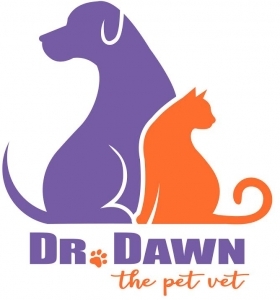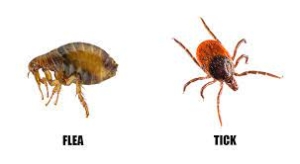
It is always time to think about tick control, as they are always a threat, at least in my part of the country. Especially, leading into spring, dogs and cats are both susceptible. But fleas, if they did not successfully set up shop in your house last fall, will be back, likely with a vengeance this year, at least if the weather trends of the last three years continue.
I have heard many myths and home remedies for preventing these revolting and disease carrying critters, and thought this an opportune time to weed through fact and fiction.
Myth: Feed pets raw garlic, garlic powder, or garlic pills to prevent fleas.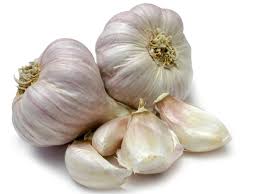
False!: There is no clinical evidence that garlic has any effect on fleas. In fact, it is potentially harmful to pets, and cats in particular. Garlic is in the allium family, which includes onions, shallots, leeks, and chives, which can cause severe anemia. Also, they can cause stomach upset, vomiting, and diarrhea.
Myth: Feed your dog 1 mg of brewer’s yeast for every 5 lbs of weight, mixing it into the food (or buying brewer’s yeast tablets)
False: Brewer’s yeast is not toxic, but there is, again, no evidence of it’s effectiveness against fleas. Both of these claims survive through anecdotal reports, while research studies have disproven the validity of their usefulness.
Myth: Ultrasonic devices can be put on pet collars to emit sounds that repel fleas and ticks.
False: High-frequency ultrasonic devices, both worn or placed in the home, are ineffective for fleas, other insects or rodents. In fact, some states have made it illegal to sell them, as they have been deemed fraudulent. And, these frequencies, which we cannot hear, but our pets can, have been blamed for behavioral changes in our pets.

Myth: Cut an orange in half and rub it on your dog’s back and stomach to repel fleas.
False: Citrus peel, particularly of oranges, contains linalool. It is a fragrant chemical used in soaps, shampoos, detergents, and lotions. It has been shown to repel insects with variable results. For it to have any effect on fleas, it would need to be chemically extracted and concentrated, likely in noxious concentrations to the skin of a pet.
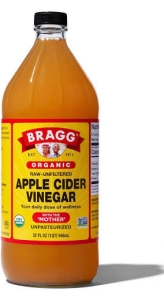

Myth: Spray your dog or cat with a mixture of apple cider vinegar and baking soda.
Mostly False: Vinegar, or acetic acid, in high enough levels to actually be toxic to fleas, would be harmfully acidic to the skin. With repeated and long-term applications, even moreso. Baking soda has no known effects on fleas.
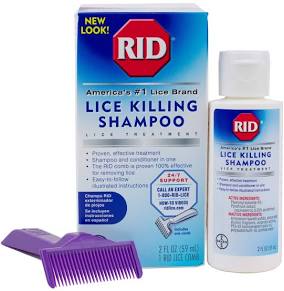
Myth: Use lice shampoos for humans on your pet to prevent fleas.
Maybe, but with extreme caution: These shampoos contain pyrethrins, which are organic compounds that are in many flea shampoos marked for dogs and cats. Many vets prefer to avoid these shampoo in favor of newer, safer compounds for flea control, and if you prefer to use this product, just get one formulated specifically for pets, not humans, and not for lice.
Myth: Coat pets with mineral oil to suffocate the fleas.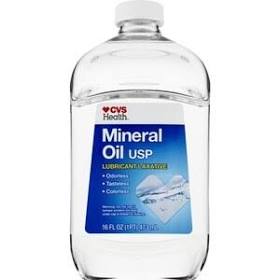
May work, but impractical:Let’s just think about this. You may be able to drown fleas in mineral oil, but the volume of oil needed would be quite messy. Do you really want your dog or cat covered in oil? I don’t.
Myth: Bathe your dog or cat with Dawn liquid detergent and oatmeal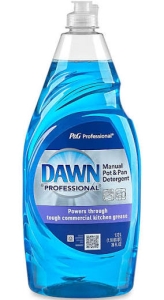
Maybe, but not such a great idea either. In general, bathing your pet, even with plain water, will help kill and flush away fleas. However, detergents used as shampoo can by quite drying to the skin, creating another problem. Dawn will effectively remove grease and oil from hair, but will not specifically kill fleas. Oatmeal-based shampoos do not have the ability to kill or repel fleas. BUT, you will likely need them to soothe your pet’s severely irritated and dried skin if you use Dawn on them too much, but hopefully you can avoid that if you read the first part of this paragraph!
Myth: When washing your pet, don’t rinse first because fleas will jump off. Start with a soapy lather that will trap and suffocate them.
What?! How do you even do that? I have heard this before. First of all, I can’t see how you would even generate a lather with shampoo on a dry dog or cat. Secondly, they would not like it, and you would spend a very long time rinsing all this shampoo off them. Lastly, since a bath in water alone can drown fleas, why would anyone try this?
Myth: Keep a think layer of diatomaceous earth on your floors (where vacuums can’t reach) and vacuum every 3 days, tossing some on the floors first. Sprinkle Borax washing detergent on carpets and wash pet beds with it. Salt your carpet.
True ( but incomplete): Diatomaceous earth, boric acid (found in Borax and other powders intended to be applied to carpet), and salt all dehydrate the flea maggots (larvae) found in the carpet, pet bedding, and other places in flea-infested environments. These remedies can be an effective part of an overall flea-control program, but work best applied to the locations that your pet frequently sleeps.
Myth: Spray the yard with Ivory soap and water to prevent fleas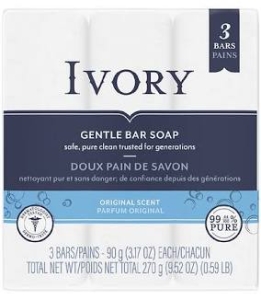
False: Soap and water can be effective against adult fleas on the pet, but since the adult flea is only on the pet and does not live out in the yard, this would be an ineffective environmental treatment.
Myth: Release nematodes (roundworms) into the backyard to eat flea larvae.
False: Once, a long time ago, a popular natural remedy for the environment, this was never actually found to be effective. This is likely because there are not huge concentrations of flea maggots in the open spaces of a yard to be eaten by the roundworms. Plus, now you have a roundworm issue in your yard! Can I say duh?! and Gross!
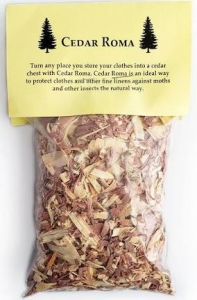
Myth: Spread cedar chips in the yard to repel fleas.
Maybe, but impractical. Cedar is a natural insect repellent, but unless you cover your entire yard in cedar mulch, it is unlikely to be of much value. Plus, this will do nothing to protect the inside of your house, where most infestations occur.
Myth: Flood the yard to suffocate flea eggs and larvae.
Again, not realistic. Unless you are thinking of harvesting cranberries in your yard, never mind mosquitos, etc., or if you live on a boat, this is another unrealistic option. Again, this would not protect you indoors.
Myth: Plant pennyroyal, also known as fleabane, in your yard to repel fleas.

False: There are botanical references to fleabane’s attribute of repelling fleas. Some feel that the plant, dry or live, can repel fleas. Other references claim that the smoke from the burning plant is the actual repellent. Either way, like cedar mulch, it would require large quantities to be effective, if at all, and would leave the indoors unprotected.
Myth: Keep cats indoors.
False: While in theory, a pet living strictly indoors has a lower exposure risk to external parasites, fleas can and will find a way to get into your home. They can hop on your shoe, pant leg, or a visiting pet, and find a perfectly happy home in your home, and on your pets where they can feast on them for blood meals. If it sounds gross, it is. Within a few weeks, two fleas can become two thousand fleas inside the warm comfort of your home, particularly in the fall,when I find that many clients seem to think it is time to stop flea control. That is exactly when you should be keeping up with it.
Personally, I religiously give flea and tick preventative throughout the year. I have seen the effects of one flea bite on a patient, making them miserably itchy, mostly bald, and their pet parent’s investments, both in time and money, to get their pet and home back to a happy, flea free state. Regarding ticks, and the diseases that they carry, well that is another discussion for another day. Suffice it to say that I also keep a tick collar on my dog all year, having watched her nearly die from a tick born disease. You have to be comfortable with the flea and tick prevention that you select for your dog, and for your family. Discuss it with your veterinarian, but here are some general tips that I do think work.
Parasite control can include manual removal of parasites through brushing and flea combing, oral or topical medications prescribed by a veterinarian, indoor environmental treatment that includes frequent washing of bedding and vacuuming. You can also enlist the help of a licensed pest control operator for indoor and yard treatment. You yourself should keep your grass cut, and control brush and other vegetation that discourages wild animals and their fleas from nesting in your yard.
Remember, pets get fleas by passing through an area where some other host has left behind an environment contaminated with flea eggs, maggots, and pupae. A common myth is that fleas spread by jumping from pet to pet. In fact, once a flea finds a host, it will not leave its host unless killed by treatment, washed off, or inadvertently displaced by the scratching, chewing, and grooming. Fleas spread by contamination of the environment.
Not all flea treatments are the same, nor are they all equally safe. Please consult your vet. There are many unsafe products still on the shelves, and I have seen countless cases of toxicity ranging from severe skin burns to neurologic side effects, particularly in cats.
More flea facts:
– There are more than 2,000 species of fleas, but only a few of them affect our pets and infest our homes. The most common flea found on dogs, cats, and certain wild animals we might see is the common cat flea, Ctenocephalides felis.
– Fleas are more of an environmental concern, since 95% of the flea population (eggs, maggots, and pupae) lives in the environment, while 5% (adults) live on animals.
– Dog parks and other open spaces like your yard are not likely sources of fleas, since pets do not tend to spend a lot of time resting there. Also, open spaces exposed to sunlight, and cold in the winter, are not hospitable for the immature fleas.
-Inside the home, the flea population will be concentrated to where your pet sleeps or rests.
-Success flea control requires treatment of both your pet and the environment. Topical flea treaments kill fleas that come in on your pet. If you were to do one thing, do that.
-Squirrels and other rodents carry different flea species than those that infest dogs and cats. However, raccoons and opposums can introduce dog and cat loving fleas into a yard if they have nesting areas accessible to your pets. Plus they carry other diseases that you wouldn’t want near your pets or your children, for that matter.
Dr. Dawn
Please share and SUBSCRIBE here
